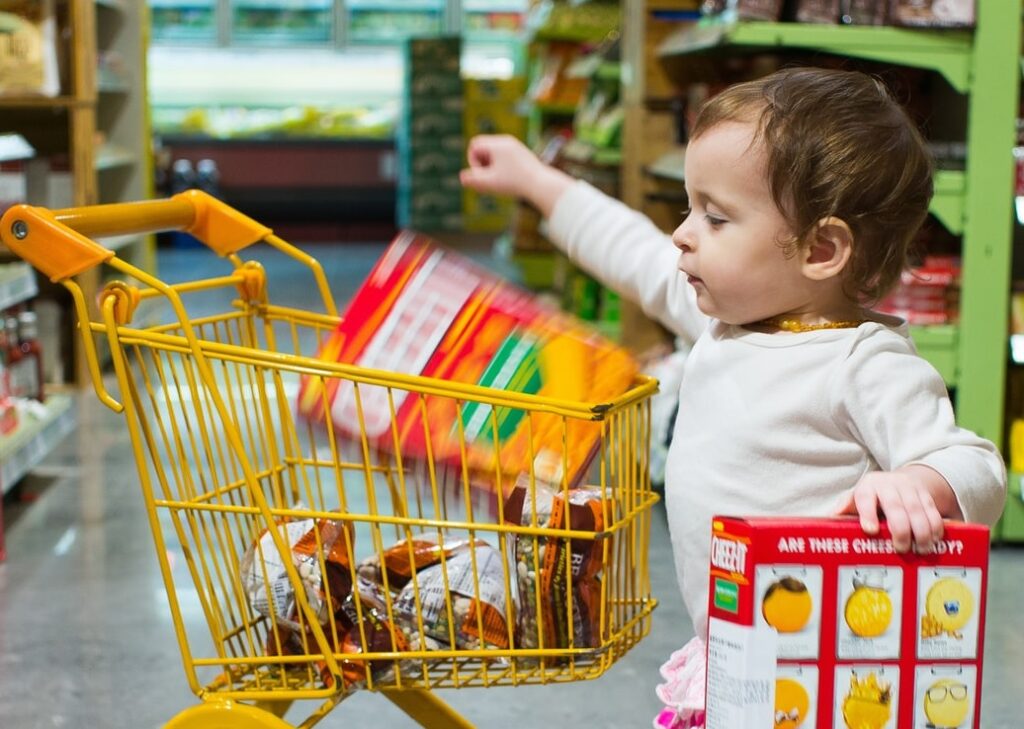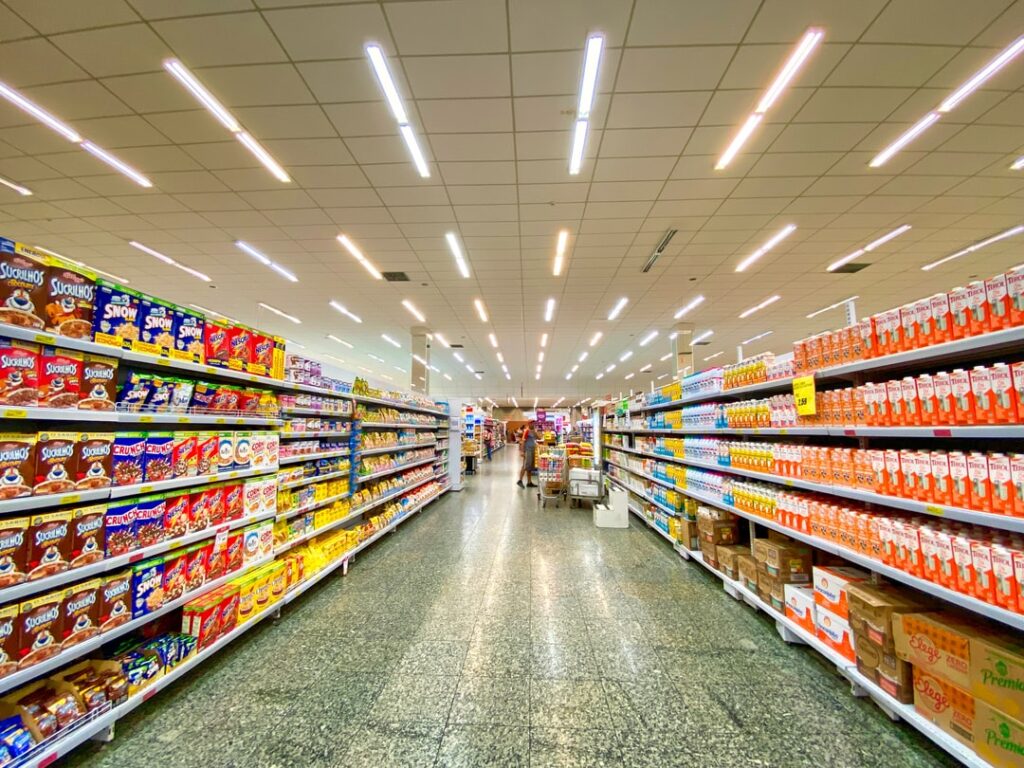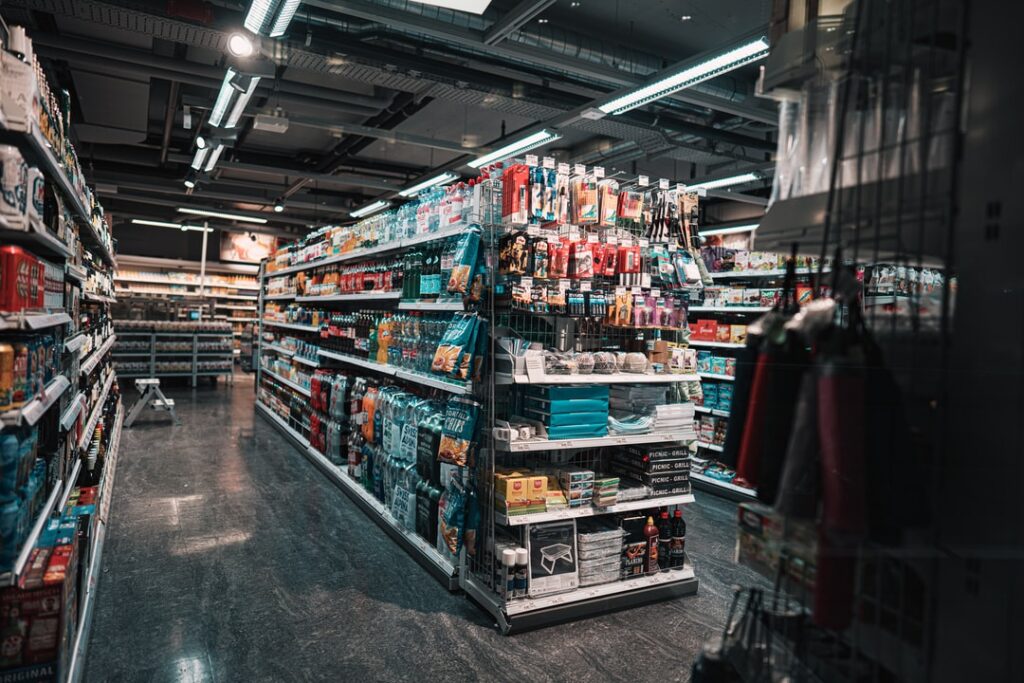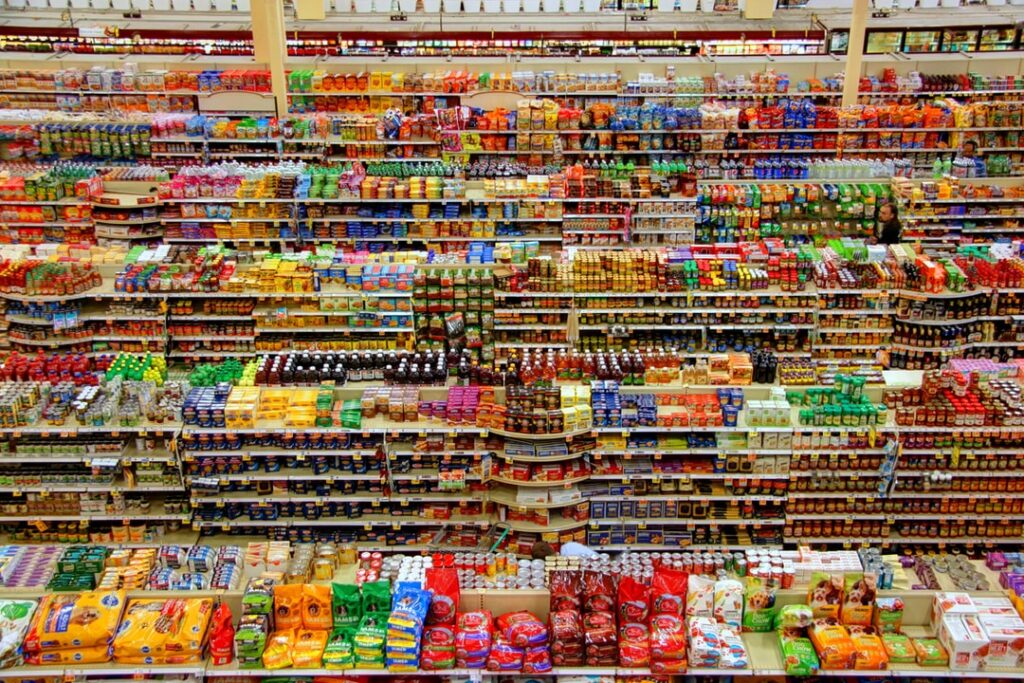Or how not to fall prey to hidden persuaders and fill your trolleys at supermarkets

Diogenes, the cynic Greek philosopher who lived in a barrel, was having bread and lentils for supper when Aristippus, the hedonistic philosopher, saw him. A student of Socrates, Aristippus charted a different course, living comfortably as a courtier to King Dionysius singing his praises. He asked Diogenes to submit to the king to avoid having to survive on bread and lentils. Diogenes replied that only if Aristippus had learnt to live on bread and lentils, he would not have had to be subservient to the king.
Making do with what one needs is perhaps key to many real-life situations, including dealing with supermarkets. It is helpful to know the games supermarkets play, some legitimate, others not so legit. As Sun Tzu wrote in The Art of War, knowing the enemy is key to winning many battles. Whether one likes it or not, the insatiable marketeer is an enemy. Knowing their methods can help prevent avoidable expenditure.
Dr Robert Cialdini, Professor of Psychology and Marketing at the University of California Santa Barbara, Arizona State, and Stanford Universities, and a bestselling author, writes as follows:
“Chronically unsuccessful dieters eat fewer high-calorie foods and lose more weight after forming if/when-then plans such as “If/when I see chocolate displayed in the supermarket, then I will think of my diet.” Especially for goals we are highly committed to reaching, we’d be foolish not to take advantage of the pre-suasive leverage that if/when-then plans can provide.” (p. 138)
Cialdini, Pre-Suasion: A Revolutionary Way to Influence and Persuade, Random House, 2017, p. 138.
Knowing what one is likely to encounter and be swayed by will help frame pre-suasive self-messages in advance.
First impressions
Supermarkets try to make the best of first impressions. The approach could vary by location and type of merchandise: general consumer packaged goods (CPG), sports equipment, electronic goods, musical instruments, perfumes, liquor, or flowers. The front end is invariably taken care of whether it is a general supermarket or a specialised store. It also applies to a banking hall, hotel lobby, or retail outlet. The idea is to make the customer believe she is in for a fantastic experience.
They also take care of the presto area, visible from the street outside the window. In many developed countries, and increasingly in India, this area is almost always lit up even through the night. Over time, the concept has extended to taking care of not just the front end but further inside and till the end.
Therefore, the counter customer rule should be not to fall for first impressions or the presto view. But, contrarily, it could also mean that a store that does not offer an excellent first impression is probably one which does not care much for its clientele. Or it is going downhill so much that expenses on such cosmetic looks may not be worth their while.
Ambience
Related to the front door experience is the ambience. A strong waft of cool air from an air curtain before entering an airconditioned interior will make one feel like entering a new world and experience to look forward to. Relaxing soft and slow music would make you spend a longer time. Research shows that the slower the music, the longer the inside time. It slows down your movement. Therefore, you spend more time and more money. By the way, have you seen a clock in a supermarket?
Just as good literature contains descriptions that cater to the different senses, a good supermarket experience will have something for the eye, ear, nose, touch, and taste. The fragrance of freshly baked bread, just as the sight of glisteningly fresh vegetables, makes the customer spend more. The soft music or friendly staff will cater to the auditory sense.
Welcome drinks cater to taste. However, the cost is nothing compared to the extra customer spend that such welcome drinks could generate. Research shows that welcome drinks make customers spend more time at the mall/supermarket. According to one study, every additional minute translates into extra two dollars spent per customer.
Following Cialdini, a wise customer would reject the welcome drink if not needed. Alternatively, she would pre-suade herself not to stray from the shopping list, whatever might be the sensory experience.
Scent marketing
Studies show that if a customer gets to experience a product, she might go ahead and buy it. Supermarkets routinely try such ‘scent marketing’ in perfume counters where salesgirls spray perfumes on the body of even uninterested and unsuspecting customers. Or it could be the sample tea that I have often tasted from an Afghani at a Mumbai outlet.
The smell of fresh oranges, research shows, could increase customer spending by 20 per cent. Thus, the overwhelming fragrance of filter coffee, fresh bread, popcorn or barbecue, perfumes and other stuff outside movie halls and malls encourage people to buy them. That is why movie halls usually have popcorn stalls at the entrance or somewhere prominent.
Sampling
When smell alone is not satiating, taste follows. Customers who sample a product spend ten to twenty per cent more. This investment gives a positive return. Grand Sweets and Snacks in Adyar, Chennai, used to give out sample variety rice to every customer, served in disposable leaf plates. Sometimes it was lemon rice; on other days, coconut rice, curd rice, or sweet pongal. They were more gifts than samples that were not on sale separately. In the early 1990s, I always looked forward to these samples, much more than I bought. Did it make me spend more? Most likely, yes.
The customer counter rule: avoid free samples, or have a bite elsewhere at a cheaper rate before heading for places which could entice you with the smell of overpriced popcorn or barbecue. Or else, you should be strong-willed like my former colleague. He once attended a wine exhibition at the World Trade Centre in Cuffe Parade Mumbai during lunch, tasted everything, bought nothing, and still managed to walk back to work on his own feet.
Accessories
The shopping cart is an unavoidable accessory at any supermarket. Invariably, these are super large. The staff nudge customers into going for the large trolleys instead of the smaller handbaskets. They are placed near the entrance or outside, where the customer can pick them up soon after parking. They are also big enough to hold a kid or two.
The large trolleys make the customer buy more in many ways. For instance, turning them around might require you to go till the far end. You will have to pass more shelves and enticing goods in the process.
The customer counter rule: If you need only a handbasket, ask for it if not immediately available. If you need only one or two items, dispense with a basket.
Layout
Once inside, the layout and design of the supermarket also work as ‘hidden persuaders.’ For example, there might not be any windows showing you what is happening outside. So with your focus on shopping, you will not notice when darkness sets in.

Essential items could be at the far end. Certain other things like eggs could be in unusual places you need to go in search of. These practices make you walk more and see more items on the way. You will spend more as you impulsively pick up almost anything you suspect you are running out of. As you walk around, seeing what others have bought might tempt you also to try them out.
Some parts of a store provide more excitement than the rest. Stores have their unique ways of pushing people towards the less exciting areas. These vary from store to store, city to city, and country.
Aisles stocking expensive stuff could have smaller floor tiles. The louder sound on account of trolley movement might slow you down. As a result, you spend more time in such areas.
Has it happened to you that your neighbourhood supermarket rearranges its display layout once in a few months? If so, the idea is to get you to see more stuff as you look around for what you need.
Impulse buying
The layout of checkout counters encourages impulse purchases, or what I would like to call checkout purchases. These are mainly low-value items that one might feel like buying just at one look. These could include kids’ toys, soft drinks, assorted gifts, and even hand sanitisers. So why not surprise your favourite niece with those chocolate bars or chewing gums or a chewie for the less demanding member of your family, Fifi, the fluffy spaniel!
What these last-minute essentials are would vary culturally and regionally and are left to the imagination of the staff depending on local whims. Therefore, the customer should steel herself against impulse buying by sticking to the shopping list.
Display
Supermarket display choices could increase customer spending. For example, fancy and premium breakfast cereals with cartoon figures could be at a child’s eye level. More expensive products could be at an adult’s eye level. The more expensive brands would be more visible, and cheaper and newer products less visible.
The supermarkets may keep closely related items next to each other. This arrangement is convenient—for instance, potato, onion and tomato, ginger and garlic, bread-butter-jam, etc. However, even if only one is on the shopping list, the customer might reach for others. Therefore, the customer should guard against such impulses.
The fruits and vegetables in the front have to look fresh, healthy, and attractive. So, supermarkets have water sprayed on them periodically to make them look shiny and new. These initial purchases of healthy foods make the customer less guilty as she later drops less healthy ones in her cart.
Supermarkets use endcaps to get people to buy more. These are shelves placed across the end of two rows of back-to-back shelves. Naturally, customers presume that the products displayed here are cheaper. But, even at standard prices, endcaps increase sales.

How the food looks and smells, or does not smell, especially vegetables, meat, and fish, can turn on purchase impulses. Supermarkets change ice daily to avoid the foul fishy smell. Watering the vegetables daily also helps.
Following a rule of six, supermarkets do not display items if they don’t have at least six of one thing. If one keeps less, the product is in great demand (too fast to refill or remove them), or they are pushing the last few pieces of an old product. The rule also implies that there could be one or two of your favourite brands inside but not displayed.
Products
Misleading information in packages is a broader issue beyond the scope of this post. But, a customer needs to guard against brands sold in the supermarket’s name. Supermarkets get high margins with these products. The price differential may not be worth the lower quality one might have to settle for. The store might be pushing too many own brands at the cost of those you prefer—shun such markets over time.
Similarly, beware of higher-priced fancy products. Again, the extra cash might be going just for the packaging and not for any perceivable difference in quality.
Pricing
Beware of psychological pricing traps. Bata pricing, introduced in India sometime in the 1970s, is well known. People do not perceive Rs 99.99 as 100, but as 99 plus something. Prestige pricing involves higher prices to target those who equate higher prices with better quality like signature dishes or chef’s choice in some restaurants.
At the same time, dropping the decimals altogether for impulse items increases sales in one research. For example, two related products sold at $4.50 and $5.50 were offered at $5, giving the customer a choice. This increased sales by 300 per cent. Did the round figure signal that it was a bargain?
Some pricing strategies are deliberately opaque and intended to confuse. For instance, supermarkets might price packed vegetables per piece while pricing those sold loose by weight. This practice makes comparing prices impossible.
Supermarkets encourage the idea that oversized items cost less. They take advantage of this to sell large items at higher prices. On the other hand, it might be cheaper to buy the same product separately for the same combined weight. Comparisons are also tricky when weights are in different units.
Some pricing strategies are like bank interest rates for 888-day deposits, which ordinary people cannot compare with anything else they are familiar with.
The Buy Decision
AIDA process
A customer’s buy decision follows different stages of Attention, Interest, Desire, and Action. These stages refer to the cognitive steps in a customer’s eventual purchase of a product or service. A customer goes through the same stages, whether purchasing a wristwatch or securing admission for her child to a particular school. Some of the best global brands, including Nike, Coca-Cola, and Apple, owe their success to taking care of the different steps in the AIDA process.
Supermarkets also do an AIDA test after displaying a product. The steps in the test are as follows:
1. Does the product grab Attention?
2. Will the product generate customer Interest?
3. How can the customer’s interest be transformed into a Desire?
4. Will the customer follow up desire with Action?
Attention
Attention can be drawn to advertisement campaigns with catchy phrases that tell a story, quote statistics, solve a problem, generate fear, or answer a question. For example, in supermarkets, prominent displays in critical locations or direct staff intervention could draw attention. But, it would be not very meaningful unless converted into Interest.
Interest
Staff might notice customer interest when she picks up a product and turns it around. They might approach her to convert the interest into a desire.
Desire
The staff might generate desire in the customer by praising the product and its differences from other competitors. They might quote favourable feedback or even dubious market survey reports. If the product is a perfume, they might spray it on the arm. The most challenging part would be converting it into action.
Action
Sampling, bigger trolleys, promises for delivery and installation, and after-sales service contribute to converting desire into action.
Following Cialdini, customers should be aware of the process they will go through and learn to resist progression from one stage to the next. They should be mentally prepared not to buy something they do not want. At the same time, they should also be aware of behavioural issues, such as those with Attention Deficit Disorder, which make them prone to impulsive purchases. Customers should, therefore, stick to their shopping list or decide to postpone a final call on an impulsive buy to a subsequent visit or only after checking out alternatives for both products and outlets.
Offers
Customers should be careful with offers or discounts. These offers take many forms, such as ‘buy one, get one free (BOGOF)’, ‘buy more, get free,’ ‘buy ten, get discount,’ etc. These could camouflage different kinds of seller behaviour.
BOGOF deals are nothing but a 50 per cent discount. But, by using the buy one, get one free option instead of a straight discount, the seller can push two products instead of one. The trick is in making you think that you are getting one for free instead of two at 50 per cent each. Therefore, you may get the product you wanted at a lower price elsewhere if you look around.
Camouflaged pricing is where, say, ten pens are offered for Rs 50. The customer might think it is a bargain. But this price could be the same as individual pens, available separately for Rs. 5 each. Moreover, imagine that by the time one uses three or four of these pens, the rest would have become unusable.
Offers also tend to follow clandestine price increases. They could also be attempts to clear old stock or perishable goods nearing the date of expiry. Finally, the bargain offers could be in combination with slow-moving items.
One also needs to watch out for promotional tags retained even after deals have ended. You may not get the discount and may not be aware unless you scrutinise the bill.
A careless customer might buy items she may not require, more than what is needed, which could even be an expired product or overpriced.
Payment method
While cards, QR codes, and other digital payment options are convenient, research shows that they increase spending as they also ease the pain of parting with cash. Thus, it might promote impulsive buying. The customer should train herself to think of each such payment as parting with money.
Other promotion tricks
Supermarkets also use other inducements based on ‘scarcity sells.’ Thus, tags of being the last piece, or only one of two left, etc., could induce purchases. There are other tags too that one should be wary of: ‘best price ever,’ ‘not to be missed offer,’ etc.
Staff might focus on the best feature/s but will not mention competition even if they were better. On the other hand, they might refer to one or two product weaknesses to win the customer’s trust and enhance the credibility of other claims. Second-hand car dealers follow such approaches. They will give you many reasons why you should not buy one particular car and take you finally to one they have been trying hard to sell.
Online supermarkets
The lessons from seller behaviour in supermarkets often apply to online shopping also. As an impulsive online customer, I am not competent to pontificate. But, online purchases make one aware of the pitfalls. The issues are also different and much broader. I will try to mention a few.
Beware of the sidebars nudging you into buying similar products, none of which, even if branded, would be known.
There are also governance issues where customer data could be misused. One recent case involving Amazon in India related to their favouring certain retailers. Some Amazon executives themselves were involved in establishing these retailers. They used proprietary information on customer preferences and purchase patterns to develop their product and pricing strategies. After a threat of antitrust investigations, the partnership was to end this month (May 2022).
Shopping list
The many precautions for customers discussed above include shopping lists, apart from avoiding sample tasting (go after food?), handbaskets, or dispensing with one. One could also play faster music on one’s headphones and leave soon after shopping. The rest is left to own imagination and circumstances.
But, do shopping lists increase or decrease sales? According to one study, those without a list might forget a few items. On the other hand, those with a list will buy every item on the list. So, according to this study, shopping lists increase sales. My view is that those with a list will stick to that and not buy unwanted stuff. The jury is still out.
Judging the supermarket
Over a period, one could form one’s judgement on a particular supermarket in the neighbourhood. The principles they are trained in and expected to follow could be used against them if one knows what they are.
For instance, there is the distance rule. When you walk down the corridor of a hotel floor, an employee walking past would generally wish you and ask you whether she can be of any help. Professionally run supermarkets follow a similar eight-foot or ten-foot rule where the employee greets the customer and makes enquiries. In India, perhaps because of the crowd, they may not acknowledge you even if they run into you while turning the corner. Lack of attention to the customer could extend to the products they sell and other aspects of service. One needs to judge based on experience.
Another rule is not to sell a product that one wouldn’t buy for oneself or the family. Yet, at the same time, stores are known to change expiry labels, include them in combo bargains, or use other unethical means to sell ageing products.
One can identify such outlets over a period. Shun them. My policy is not to waste time complaining if the decision is to discontinue future interactions. Every complaint is free management advice. Why offer such inputs for free when they should have taken pains to elicit them in the first place. Hopefully, bad organisations and unhealthy practices will die slowly following the corporate equivalent of the Darwinian survival of the fittest. New and more robust ones will come up in their place.

Conclusions
Every idea will have detractors. Some are born contrarians. Or it could be just that there is a different point of view one had not thought of. There could thus be those who argue for overspending because it is good for the economy. Remember Keynes. On the other hand, some argue against waste to promote global sustainability.
There is extensive research on how the poor fellow, the consumer, behaves under different circumstances. Books on how consumers behave are legion. Marketing courses and their standard textbooks are titled Consumer Behaviour and not Marketing Management. I once asked a marketing professor about research to help consumers judge the sellers. Unfortunately, there is hardly any. The lack of research from the customer’s point of view could be because, and I am being judgemental here, big corporates fund most marketing departments, academic chairs, and their research, publications and conferences. Add to this, summer internships, industry visits and other engagements, and prestigious placements that guarantee future admissions.
Hopefully, somebody will one day publish a book on Seller Behaviour backed by sufficient research.
© G Sreekumar, May 2022
![]()
Deep research indeed, and enjoyed thoroughly.